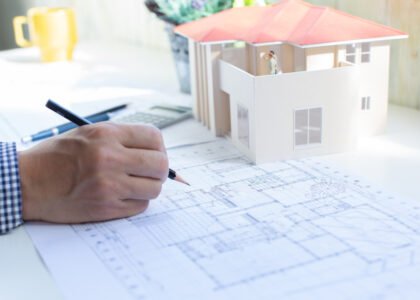The Perth building industry is evolving rapidly, and in 2025, homeowners and developers face a key question: Should you choose modular building or stick to traditional construction? With rising costs, sustainability concerns, and tighter timelines, the choice between modular and conventional building methods has never been more important.
Let’s break down the pros, cons, and major differences between modular and traditional building in Perth—so you can make a smart, future-ready decision.
What Is Modular Building?
Modular building (also known as prefabricated or prefab construction) involves assembling sections or “modules” of a building off-site in a controlled factory environment. These modules are then transported and installed on-site.
This method is gaining popularity across Western Australia due to its efficiency, cost-effectiveness, and reduced environmental impact.
What Is Traditional Building?
Traditional building follows the conventional process of constructing everything on-site—from the foundation to framing, roofing, and finishes. It’s a method that’s been used for decades and remains common across most of Perth’s residential and commercial projects. But as per technology and techniques Perth builders are improving the methods.
Modular Building in Perth: Pros and Cons
✅ Advantages of Modular Construction
1. Faster Construction Time
Modular homes can be built up to 30–50% faster than traditional builds because work happens simultaneously in the factory and on-site.
2. Cost-Efficiency
With better material control, fewer weather delays, and efficient labor use, modular building in Perth can reduce overall project costs.
3. Sustainable & Eco-Friendly
Prefabrication reduces waste, optimizes energy use, and typically results in lower carbon emissions compared to traditional methods.
4. Consistent Quality
Factory-controlled environments ensure high construction standards, minimizing human error and defects.
5. Weather-Independent
Since most of the work is completed indoors, modular projects are less affected by Perth’s unpredictable weather.
❌ Disadvantages of Modular Construction
-
Design Limitations: While customisable, modular designs may not offer the same creative freedom as traditional builds.
-
Transportation Costs: Large modules must be transported from the factory to the site, which can add costs in remote areas.
-
Perception: Some people still associate modular with low quality or “temporary” homes, though this is quickly changing.
Traditional Building in Perth: Pros and Cons
✅ Advantages of Traditional Construction
1. Design Flexibility
Architects and builders have full control over every detail. Traditional builds are better suited to unique, complex designs.
2. On-Site Adjustments
Changes can be made mid-way through the project, offering flexibility during the construction process.
3. More Familiar Process
Most Perth builders and homeowners are more familiar with the traditional method, making it easier to find experienced contractors.
❌ Disadvantages of Traditional Construction
-
Slower Build Times: Construction can take several months to over a year, depending on weather and labor availability.
-
Higher Costs: On-site delays, material waste, and fluctuating labor charges often make traditional builds more expensive.
-
Weather Dependency: Rain or extreme heat can pause work, leading to longer completion times in Perth’s climate.
Which Is Better in 2025? Modular or Traditional?
The answer depends on your goals, budget, and timeline.
If you’re after speed, affordability, and sustainability, modular building in Perth is a great choice in 2025. It’s particularly suited for investors, developers, and homeowners who want quick returns or cost-effective living.
On the other hand, if you prioritise design flexibility, customisation, and full creative control, then traditional building still holds value—especially for high-end or architecturally unique projects.
With more Perth builders offering hybrid solutions (modular + traditional), the line between the two is also starting to blur.
Cost Comparison in 2025
| Feature | Modular Building | Traditional Building |
|---|---|---|
| Average Build Time | 12–16 weeks | 6–12 months |
| Cost (per sqm) | $1,800 – $2,500 | $2,200 – $3,000 |
| Labor Requirements | Lower | Higher |
| Waste Produced | Minimal | High |
| Customisation | Moderate | High |
Prices are indicative and vary based on design, location, and materials.
Why Perth Is Seeing a Shift Towards Modular Homes
The Perth property market in 2025 is driven by fast-moving development opportunities and demand for affordable housing. Modular homes offer:
-
Speed to market (crucial for investors and developers)
-
Better cost control
-
A response to rising material and labor shortages
Plus, with growing awareness around sustainability, more Perth homeowners are embracing prefab construction for its smaller environmental footprint.
Final Verdict
Modular vs traditional building in Perth isn’t about which is universally better—it’s about what fits your needs.
Choose modular building if:
✅ You need faster construction
✅ You want to reduce costs
✅ Sustainability matters to you
Choose traditional building if:
✅ You want unique, custom design
✅ You’re building a complex structure
✅ You prefer a familiar building process
In 2025, both methods have their place—but modular building is clearly gaining ground in Perth’s construction landscape.
FAQs – Modular vs Traditional Building in Perth
Q1: Are modular homes allowed in all parts of Perth?
Yes, as long as they comply with local zoning laws and the Western Australian Building Code, modular homes are approved like any other build.
Q2: Do modular homes last as long as traditional homes?
Absolutely. When built by reputable companies, modular homes are just as durable and long-lasting as traditional constructions.
Q3: Can I get a custom design with modular building?
Yes, but with some limitations. Many modular builders offer custom layouts and finishes, though extremely complex designs may be better suited to traditional builds.
Q4: Is modular building cheaper than traditional in Perth?
Generally, yes. The streamlined process, reduced labor, and controlled material use make modular more cost-effective—especially in 2025’s market.
Q5: Which is more environmentally friendly?
Modular building wins here. It produces less waste, uses energy-efficient materials, and supports sustainable construction practices.






